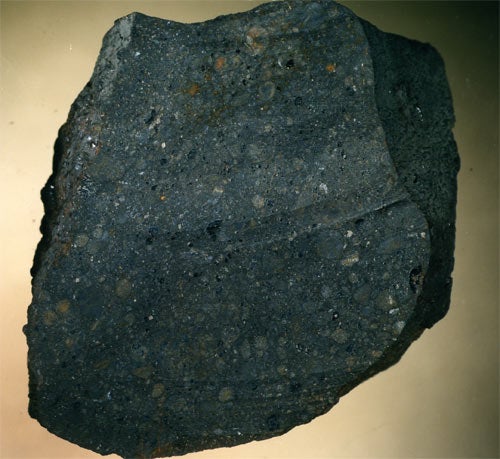Scientists at Purdue University are trying to take the temperatures of the early solar system — and they’re looking at meteorites for the answer.
Michael E. Lipschutz and Ming-Sheng Wang analyzed 29 enstatite chondrite (EC) meteorites — rocks that formed 4.5 billion of years ago, in close proximity to our planet. Lipschutz and Wang believe the analysis of these samples will help our understanding of the conditions in which our planet formed.
“What happened to these rocks most likely happened to Earth in its early stages, with one great exception,” explains Lipschutz. “Shortly after early Earth formed, an object the size of Mars smashed into it, and the heat from the cataclysm irrevocably altered the geochemical makeup of our entire planet.”
A key difference, according to Lipschutz, is the meteorite samples were not involved in this collision and, therefore, not chemically altered. Because they are similar matter to what formed early Earth, these fragments could be remnants of the material that eventually became our home planet.
By studying the chemistry of these samples, scientist can determine the surrounding temperatures of when the meteorites formed. To do so, chemists must identify and examine rare elements, such cadmium, indium, and thallium. These elements, also known as volatiles, function as natural thermometers.
“[Volatiles] can tell you whether the temperature was high or low when the rock formed,” says Lipschutz. “We tested two different kinds of ECs, and the oldest, most primitive examples of each kind had very similar volatile contents — which means their temperature at formation was similar. These rocks have essentially recorded the temperature at which the early Earth formed, and we now know that this was much lower than 500° Celsius [932° Fahrenheit].”
While the findings are promising, many pieces of the puzzle remain. Scientists must study more EC meteorites and other solar-system samples to understand what the surrounding environment was like for our young planet.
The duo’s paper appears in the September 27 edition of Environmental Chemistry.










